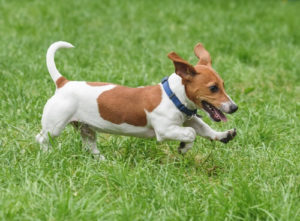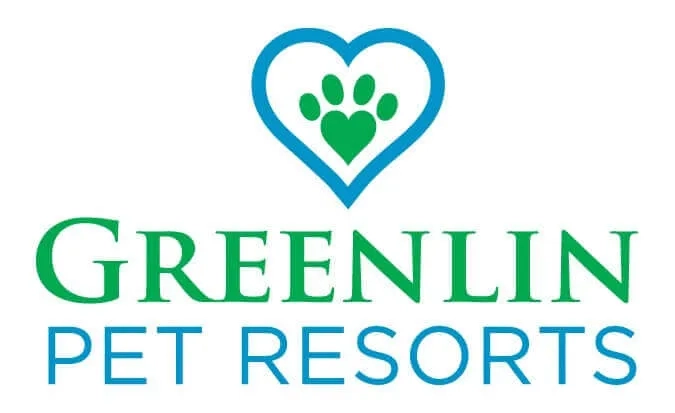How to Keep Your Yard Safe for Your Dog
Ah, the dog days of summer! School is out, and it’s time to play in the yard with the sprinkler on. Fresh air, sunshine, and room to run are important aspects of dog health and wellness, but there are some considerations dog owners should make to keep yards a safe space to play for years to come.

Dr. John Gicking, a board-certified specialist in veterinary emergency and critical care, says that “it’s common to see dogs coming in [for medical care] because of something they ingested from their owner’s lawn or garden.”
Plants are just some of the risks that your dog can face when enjoying the great outdoors, even within a fence. Fortunately, though, a few simple adjustments, such as being aware of the plants, fertilizers, and tools being used on your lawn, can create a yard that is safe for your four-legged friend to enjoy the great outdoors.
Below are some of the most common outdoor hazards dogs face in a typical backyard, as well as how to fix them so your precious pup has a low likelihood of getting hurt.
Pay Close Attention to Potentially Poisonous Plants
Some plants can be hazardous to dogs, especially if they are eaten. According to the Washington Post, many of the most popular outdoor gardening plants can be poisonous to dogs. Plants to avoid having in your yard include, but are not limited to:
- Sago Palm: This green leafy plant can be grown indoors and outdoors and is toxic to dogs and may cause liver failure
- Foxglove: This poisonous flower is toxic to dogs, cats, and horses and may be fatal if ingested.
- Oleander: This shrub can be found in warmer climates. It contains cardiac glycosides which may cause drooling, colic, depression, or death in dogs, cats, and horses.
- Lilies: Some varieties of lilies are toxic not only to pets but also to humans.
- Daffodils: These pleasant flowers are toxic to dogs and may cause vomiting, diarrhea, and convulsions.
- Rhododendrons: These flowering plants, which include azaleas, can cause cardiac failure in dogs if ingested.
Poisoning can be mild, leading to stomach upset, or it can lead to serious conditions, such as kidney failure. Thankfully, a dog usually has to consume a large amount of the plant to cause serious complications, but it can be very useful to surround plants you don’t want your dog chewing with some chicken wire, especially when they’re a puppy.
The ASPCA maintains an ongoing list of hazardous plants and in the event your dog does ingest a questionable leaf, always call your veterinarian or the ASPCA’s control center at (717) 388-8110.
Recognize the Hazards Posed by Mulch and Fertilizer
It is normal for dogs to eat a small amount of grass, it can even benefit their digestive system. However, this might cause a problem if you have recently applied fertilizer.
Fertilizers contain many helpful nutrients for your plants, but they contain harmful chemicals that can be toxic to pets. Not only can they be ingested directly, but they are also dangerous if a dog runs and rolls in the grass and then grooms itself.
Even organic or natural fertilizers that contain chicken manure or bone meal can cause digestive problems and are especially enticing to dogs, so it is best to only use them in areas your dog cannot access. Be sure to keep your dog inside, or find an alternative play area, like a dog daycare, whenever chemicals have been used in the yard.
Cocoa mulch is a popular and effective gardening material known for its chocolate-brown color and nutritional benefits for soil. However, it contains cocoa bean shells as well as other chemicals and is toxic for dogs. Mulch may also be a choking hazard, as some dogs will chew on pieces of mulch. Dr. Jones states “chewed mulch can also result in total intestinal blockages that require surgery.”
Fortunately, it is easy to choose a safer alternative such as dirt, stones, or mulch made from shredded pine, cedar, or hemlock bark.
Keep an Eye Out for Toxic Mushrooms and Weeds
While mushrooms and weeds are not intentional garden guests, come spring and summer they do pop up. Many mushrooms are harmless, but several varieties, such as amanita mushrooms, can be hazardous. The amanita mushrooms give off a fishy odor making them particularly tempting to dogs, and this same bacteria can be present in compost that contains food scraps.
Some pesticides can be used to rid unwanted mushrooms and weeds. These chemicals can be absorbed by your dog’s paws, harming them.
Anthony Smith, the president of Nursery Enterprises in Idaho suggests “a good rule of thumb is allowing 24 hours before your dog walks on the area to let everything dry and the pesticides to be absorbed by the weeds so they can do their job.” Or, you might want to try a chemical-free alternative like pulling weeds by hand.
Always Put Away Gardening Tools and Other Hazards
It is important to properly store garden tools, such as rakes, shovels, or lawn mowers, so they do not fall on, poke or injure your pet. Further, dogs should always be supervised when they are outdoors.
Include Shade and Water to Prevent Overheating
Dogs can overheat and need shade, especially on hot summer days.
According to Dr. Duffy Jones, a veterinarian at Peachtree hills animal hospital, “Dogs can suffer canine heat stroke, which can be just as potentially life-threatening to them as it is to humans.”
A tree, umbrella, or other shade structure can provide your dog the rest from the sun that they need. Also be sure to provide them with clean drinking water, particularly if they will be in the yard for an extended amount of time.
Any water features, such as ponds, fountains, and bird baths should also be cleaned regularly to avoid the growth of mold and algae, which can cause sickness in dogs and humans.
Keep in Mind Greenlin Is Here to Offer Safe Fun for Your Dog, Outdoors and Indoors
Being outside and getting exercise is not only wonderful for your pet, but also for you. Creating a pet-friendly yard is the best step to keeping your family happy and healthy.
With summer vacation upon us, you and your family might be thinking of a relaxing beach trip or spending some quality time with loved ones. The best way to ensure your furry friend is safe all day is to take them to Greenlin dog daycare.
It’s always safe at Greenlin dog daycare! Whether you need a safe place for your pup for the day while you are at work or school, or you are planning a family vacation, we have manicured outdoor play areas and indoor climate-controlled play gyms, for fun in all types of weather.
For more information please visit our website or call (717) 388-8110 to learn about our 6 locations in the Harrisburg Area.
